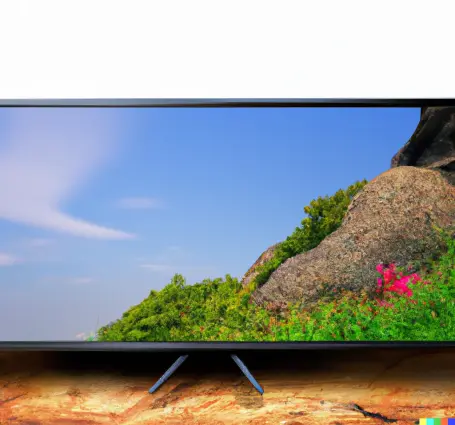Benefits of OLED Display Technology
When it comes to choosing between OLED and LED displays, OLED is often the preferred choice due to its superior picture quality. OLED stands for organic light-emitting diode, and it is a type of display technology that utilizes organic compounds to create light.
This technology allows displays to produce deep blacks, vibrant colors, and wide viewing angles. In comparison, LED displays are limited in their ability to produce deep blacks and wide viewing angles. OLED also has a faster response time than LED, allowing for smoother motion in fast-paced games and movies.
In addition, OLED displays are thinner and lighter than LED displays, making them ideal for those who need a lightweight display for their laptop or mobile device. All in all, this displays are clear choice for those looking for a superior viewing experience.
There are many reasons to choose OLED over LED. Here are few:
They are thinner than LCDs
OLEDs are thinner than LCDs, which is due to the way they are constructed. The organic materials used in OLED displays make them lighter than LCDs and less susceptible to scratching or breaking.
They are lighter than LCDs
OLEDs are thinner than LCDs and they have a low profile. This makes them more compact, which makes them easier to fit into your device.
They produce deeper blacks than LED displays, because LED displays still use backlighting (even in their local dimming variants), whereas OLED displays do not need backlighting.
OLED displays are more energy efficient than LED displays. They produce deeper blacks, making them ideal for dark rooms like movie theaters and night clubs. OLEDs have a contrast ratio of 1000:1 compared to 400:1 for an LED display.
The difference in the performance of these two types of displays is quite noticeable when watching movies or playing video games on your phone or tablet—they’ll appear sharper, brighter and more vibrant than what you’re used to seeing from an LED TV or monitor.
OLED TVs also tend to be thinner and lighter than their LCD counterparts while still producing the same amount of light output as their competitors.’
They use less power than LED displays
OLEDs have a much smaller power consumption than LED displays. The most obvious reason for this is that OLEDs don’t need a backlight, which can account for up to 60% of the energy used in an LCD display.
OLEDs are also more efficient than LEDs because they use less light per pixel and produce less heat, which means less fan noise and longer lifetimes of your device’s components.
OLED pixels can be switched completely off, to produce a black screen, while LEDs cannot; this makes dark scenes in movies appear darker on an OLED screen than they would on an LED screen.
Since OLED pixels can be switched completely off to produce a black screen, they also allow you to save energy by turning it off when you’re not watching something. This means that your TV will use less power when you’re not using it (which is always).
OLED is not just the future of display technology, but it’s also better than LED displays, LCDs and plasma displays in every way.
OLED is a type of display that uses organic compounds rather than inorganic materials like glass or plastic to generate its light. That means there are no toxic chemicals involved with these displays—so you can breathe easier knowing that your smartphone screen isn’t subjecting you or your family members’ health to harmful chemicals!
The thing about OLED is that it has an infinite contrast ratio:
there aren’t any black pixels anywhere on an OLED panel (which means there will be no dead space between gradients). The best example we’ve found for this is Samsung’s latest Galaxy S9 Plus model which has an infinite contrast ratio at all angles—you’ll see every single bit of detail onscreen even when viewed from extreme angles!
Conclusion
OLED is not just a better technology than LED, it’s also better for the environment. OLED screens use less power than LCDs and have much lower manufacturing costs. The lifespan of an OLED screen is also long compared with other technologies, which makes them more sustainable in the long run.
In addition, they are thinner and lighter than LCDs which makes them easier to use while watching movies or playing games at home on our computers or consoles!
Discover more from TechResider Submit AI Tool
Subscribe to get the latest posts sent to your email.
